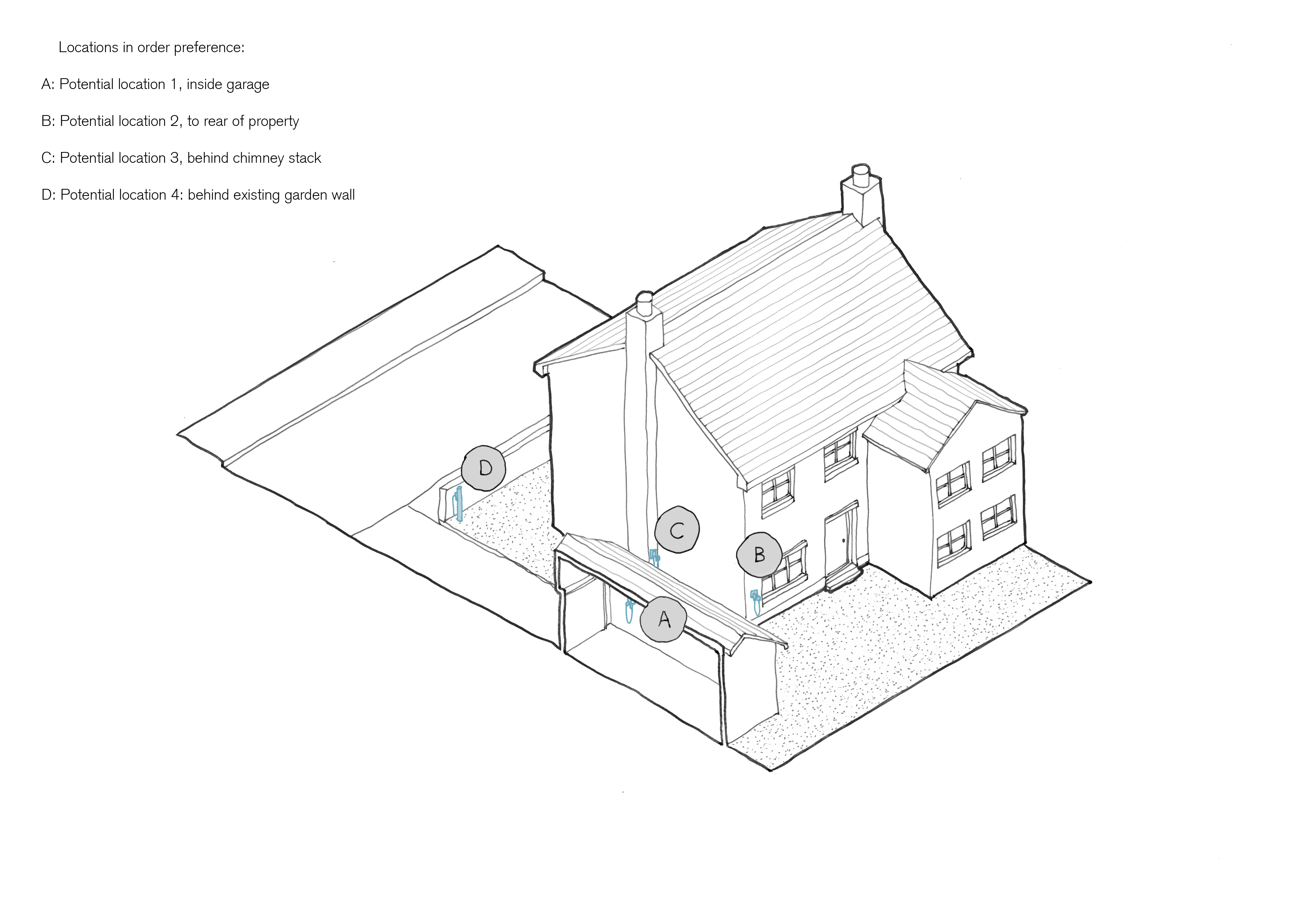Low carbon travel
Electric cars can be a good solution for those wanting low carbon travel options with the potential for reduced running costs (particularly when public transport is limited).
Electric charging points will often be required to be installed at home to support EV use. However, consideration needs to be given to the location, positioning and scale of charging points. This is particularly the case if they are located within a conservation area or the host building is listed, as there can be a visual impact; the designs of charging points are currently limited, making it harder to source one that is visually sympathetic to the historic environment. Sympathetic locations for charging points may include to the rear of a building, hidden from view in an externa niche or hidden in a small enclosure or boundary treatment.
Installing charging points generally requires off-street parking. If the property does not have off-street parking, there may be difficulties with creating parking space. The loss of front gardens and garden boundaries is a common issue across conservation areas and therefore, any proposals including this are likely to be refused. It is recommended that this is checked with the local planning authority. If access requires dropping the kerb, planning permission is needed.
Further information on charging points
Planning Portal, Electric vehicle charging points
Planning Portal, Front garden paving
Energy Saving Trust, Charging electric vehicles
Energy Saving Trust, Smart Charging electric vehicles
Page updated: 26/05/2023
